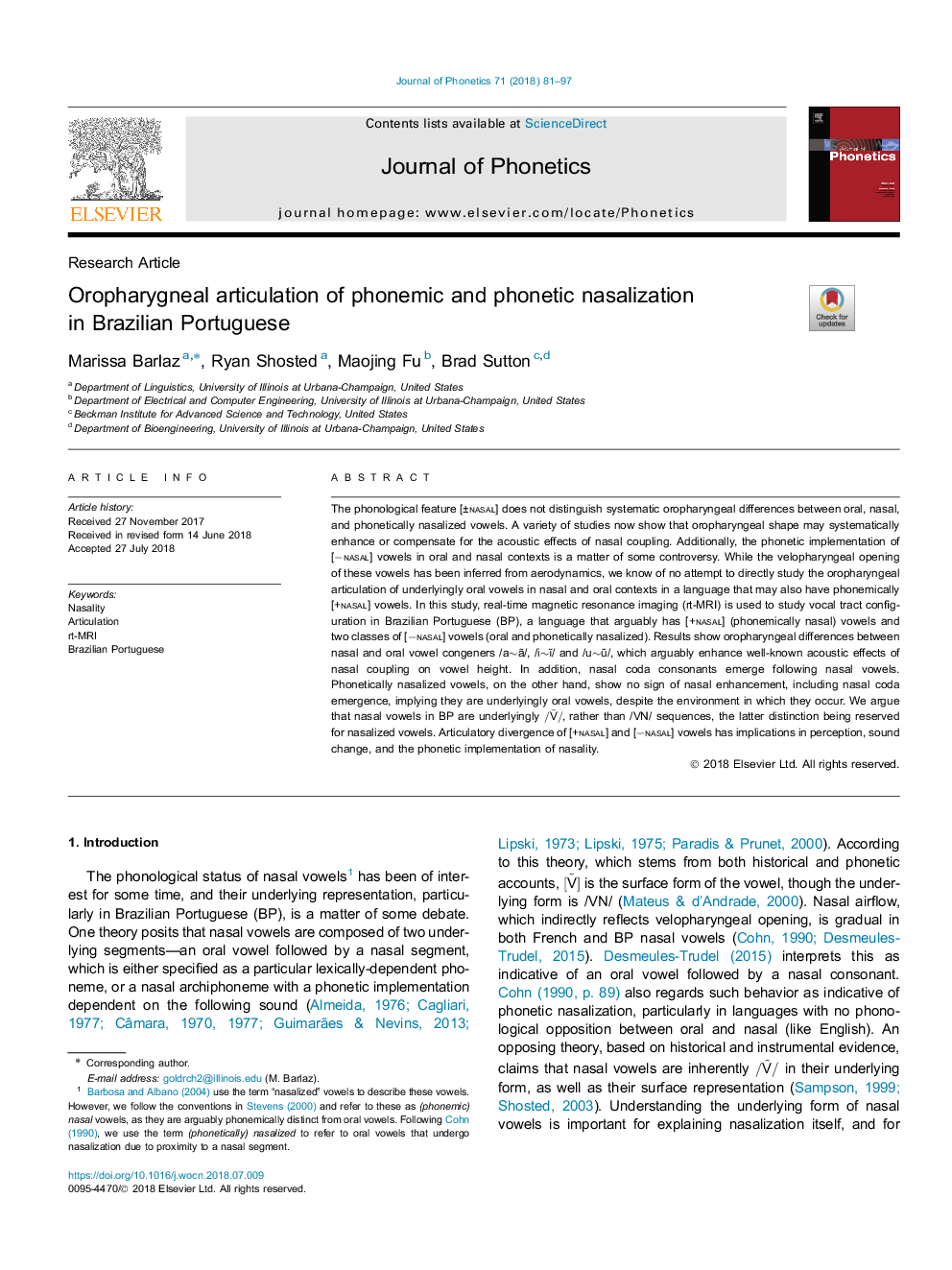| Article ID | Journal | Published Year | Pages | File Type |
|---|---|---|---|---|
| 9953292 | Journal of Phonetics | 2018 | 17 Pages |
Abstract
The phonological feature [±nasal] does not distinguish systematic oropharyngeal differences between oral, nasal, and phonetically nasalized vowels. A variety of studies now show that oropharyngeal shape may systematically enhance or compensate for the acoustic effects of nasal coupling. Additionally, the phonetic implementation of [ânasal] vowels in oral and nasal contexts is a matter of some controversy. While the velopharyngeal opening of these vowels has been inferred from aerodynamics, we know of no attempt to directly study the oropharyngeal articulation of underlyingly oral vowels in nasal and oral contexts in a language that may also have phonemically [+nasal] vowels. In this study, real-time magnetic resonance imaging (rt-MRI) is used to study vocal tract configuration in Brazilian Portuguese (BP), a language that arguably has [+nasal] (phonemically nasal) vowels and two classes of [ânasal] vowels (oral and phonetically nasalized). Results show oropharyngeal differences between nasal and oral vowel congeners /aâ¼Ã£/, /iâ¼Ä©/ and /uâ¼Å©/, which arguably enhance well-known acoustic effects of nasal coupling on vowel height. In addition, nasal coda consonants emerge following nasal vowels. Phonetically nasalized vowels, on the other hand, show no sign of nasal enhancement, including nasal coda emergence, implying they are underlyingly oral vowels, despite the environment in which they occur. We argue that nasal vowels in BP are underlyingly /VÌ/, rather than /VN/ sequences, the latter distinction being reserved for nasalized vowels. Articulatory divergence of [+nasal] and [ânasal] vowels has implications in perception, sound change, and the phonetic implementation of nasality.
Related Topics
Social Sciences and Humanities
Arts and Humanities
Language and Linguistics
Authors
Marissa Barlaz, Ryan Shosted, Maojing Fu, Brad Sutton,
